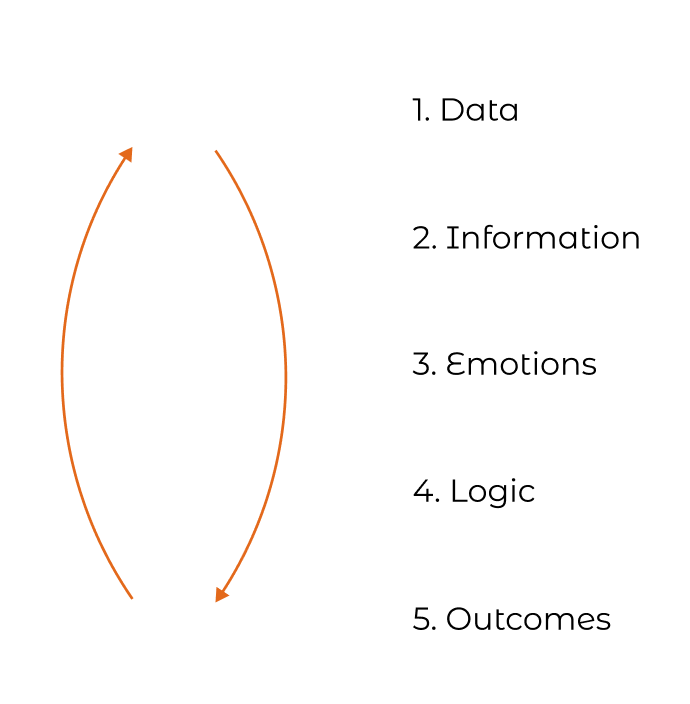
From Code to Conversations: A New Engineering Managers' Guide to Influencing Non-Tech Individuals
by Andrew MurphyIn the realm of leadership, forging a shared vision and influencing people is not just about top-down direction; it’s about collaboration and mutual respect. It’s about recognising the unique perspectives and skills that each team member brings and harnessing them towards a common goal.
What is influence?
Have you ever wondered what influence is? In my view, influence is when you use communication to help someone change their behavior and make decisions that are mutually beneficial to both parties. It is not manipulation, which is when someone tries to get someone else to do something that is only beneficial to themselves.
Leaders often need to get their teams to produce outcomes. As a leader, you can’t produce the same amount of effort as a team can. That’s why it’s important to use influence to help your team reach the desired outcome. Doing so will help ensure that everyone is on the same page and working towards the same goal.
Effective leadership requires aligning desires and common goals. If there is no common goal, it is very difficult to influence someone. As a leader, it’s important to understand why something is in the best interests of others and show them why it is beneficial for them. This is the core of influence - if what you're trying to persuade someone to do directly conflicts with their interests then you are likely going to fail. Unless you can work out how to show them it's in their interests.
What happens if we aren’t influential enough
Are you a leader who has been struggling to get your team to stay aligned and reach their goals? If so, you may not have been influential enough. When our influence as a leader is lacking, the effectiveness of our outcomes and our team's outcomes significantly decreases.
Having a team who are all heading towards one common goal is essential to reaching our desired outcomes. To do this, we need to use our influence skills to get everyone on the same page and ensure all members of the team understand the goals and the methodologies used to reach them.
It is important to remember that, while it is critical to have differing opinions and encourage creativity to solve the problems presented to a team, once a decision has been made, it is essential that the team sticks to it. If there is a lack of commitment to the decision, this can lead to misalignment in goals and methodologies, halting progress and hindering success.
To develop your influence and help your team stay aligned, try developing your conflict resolution skills and focus on getting your team to ‘disagree but commit’. This will help you get your team on the same page and reach the desired outcomes.
Why does influence sometimes fall down?
Have you ever had a situation where you gave someone the data, told them what to do, or sent them a spreadsheet, PowerPoint, or delivered a presentation, and yet they still don’t seem to be doing what you want? If so, you know how frustrating this can be. This is a great example of influence failing to land with them.
That’s why I’ve developed the Influence Doorways Model to help you break down why your influence is failing. This model helps identify why the message isn’t getting across, whether it’s a misunderstanding of data, a strong emotional reaction, or something else.
Each situation is unique, so it’s important to recognize which doorway is closed. This model can help you identify that and take steps to open the doorway and get your message across.
The Influence Doorways
The model is based on the idea that the brain processes data in a cyclical way. When you receive information, your brain processes it in a specific order to fully understand it and react.
First, your brain takes in data from your eyes, ears, and other senses. A lot of this data is filtered away. However, when you add context to the data, it becomes information. This information then elicits an emotional reaction. After that, your logical brain takes over and you can process the information, think about it, and act on it. Lastly, your actions create outcomes, which feed back in as data.

It’s important to understand where in this process we’re failing when it comes to influencing someone. Often, we give people data (Step 1) and the skills to process it (Step 4) and then get frustrated when they don’t do what we expect them to.
By understanding the “Influence Doorways” model, you’ll be able to recognize when you’re failing in any of the areas and know what to do about it.
Data
Data is a fundamental part of our day-to-day work activities. However, it is easy to forget to double-check that we have provided the right data to the right people. We sometimes make assumptions that the data has been seen or accessed when it hasn’t.
It is important to take a step back and check that every person you need to has the data they need to do what needs to be done. This could include sharing spreadsheets, adding people to email chains, or ensuring everyone is in the relevant Slack channel, etc.
With remote and hybrid working becoming more and more popular, it is even more important to double-check that everyone has seen the data you have sent. Just because the data was sent, doesn’t mean it has been seen!
Data is an easy thing to forget, so make sure that everyone has access to and has seen the data they need to do their job.
Information
Have you ever wondered what the difference is between data and information?
Data is simply numbers and figures without any context or meaning. It is the raw material from which information is created. Information, on the other hand, provides the context and meaning behind the data. It is about understanding the data in the context of the person receiving it, not just in terms of what the data means to the sender.
Also, consider how the data aligns with the goals of the receiver. By understanding the difference between data and information, we can better influence and communicate with others.
Emotions
We all experience emotions, which are instinctive reactions to things around us. They evolved before our logic processing capabilities, making them a natural part of our evolution.
As soon as we are presented with information, an emotional reaction comes before any logical processing. It is important to consider the positive and negative emotions that this information will evoke.
By understanding this, we can better understand our reactions and how we process information.
Logic
Logic is an important part of influencing others and determining their skill competency.
Remember that just because someone has a skill doesn’t mean they are proficient enough in that skill to do the task you are asking them to do. Understanding how someone processes information and how to best present your data is key for successful influencing.
Utilizing logic and understanding the skillsets of the person you are trying to influence is essential for successful persuasion.
Outcomes
Outcomes are an important part of understanding the results of our actions.
Building a feedback loop that connects actions with outcomes is essential for us to make sure we are achieving the desired results. This could be a feedback loop between ourselves, or between ourselves and someone (or something) else.
One example of this is promotions, where our desired behaviors need to be observed in order for us to be promoted. Just doing the behavior isn't enough.
Make sure the feedback loop is virtuous and our outcomes are successful.
How do I know which Doorway is closed?
Knowing which Influence Doorway is closed can be the key to getting the desired results from your team. To help with this, let’s look at the five influence doorways: data, information, emotions, logic and outcomes.
Data is typically not the problem, as we are usually quite good at providing it. However, it is important to make sure that the data is seen, accessible and not lost in the mix of other data. Check all of that! If they are confused about what's going on then it's likely data in the culprit.
Information is often where influence fails, as we forget to give context to the data or misunderstand how someone will interpret it. Do they not seem to be getting the emotions you expect from the situation? If so, then it's likely you aren't contextualising the data enough!
Emotions are key, as the positive or negative emotions elicited by the information will give the motivation to take action. Are they fully understanding the situation and just have unproducitive emotions?
Logic is easy to spot when it is the problem – if someone is producing poor work and is frustrated by it, this is likely the Influence Doorway that is closed.
Finally, outcomes. If someone is making the same mistakes over and over again and their progress is slow, this could be the issue. Are they seeing the result that their actions are causing?
By understanding the Influence Doorways and their sequence, you can identify which one is the issue and take steps to open it.
How do I open the Doorway?
Data is the first doorway to open. If you know the data doorway is closed, you simply need to provide this data. Make sure the data that you provide also talks about the current situation, the outcome that you want from this and the steps between the two.
The second is Information. Consider the internal narrative of the person you are influencing. How would they interpret the data? How can you adjust that? How can you phrase the situation so that you evoke the emotions you want from the information?
The third doorway to open is the emotional one. This is not about manipulation, but influence. Focusing on why this is important and how it impacts them and the people around them. This is why it’s important to have good relationships with everyone to understand their goals and align the information with those goals. Additionally, it is important to understand what their fears are and how to downplay those fears. Spending the time to understand someone is the heart of good, healthy, influence.
The third doorway is logic. This is about teaching, training, coaching, and putting people in conferences and getting them to listen to podcasts. This is not one we need to think about too hard as we do it well in our industry.
The last influence doorway to open is outcomes. Ask yourself if they can see the results of their actions and if not, what can be done to highlight that to them. How can you provide virtuous cycles for them?
Conclusion
Alright, wrapping up, influence in leadership isn't about bossing people around. It's about getting everyone on the same page and working towards a common goal.
The Influence Doorways Model we talked about is like a cheat sheet for you to figure out where things might be going off the rails. It highlights the importance of clear data, understanding what it means, logical thinking, and seeing the results of our actions. Each 'doorway' is a checkpoint to ensure everything's running smoothly. Especially with more of us working from home or in hybrid setups, getting a hang of this influence game using this model can help leaders keep their teams on track, motivated, and working together effectively, all with a bit of a friendly nudge rather than a stern shove.
